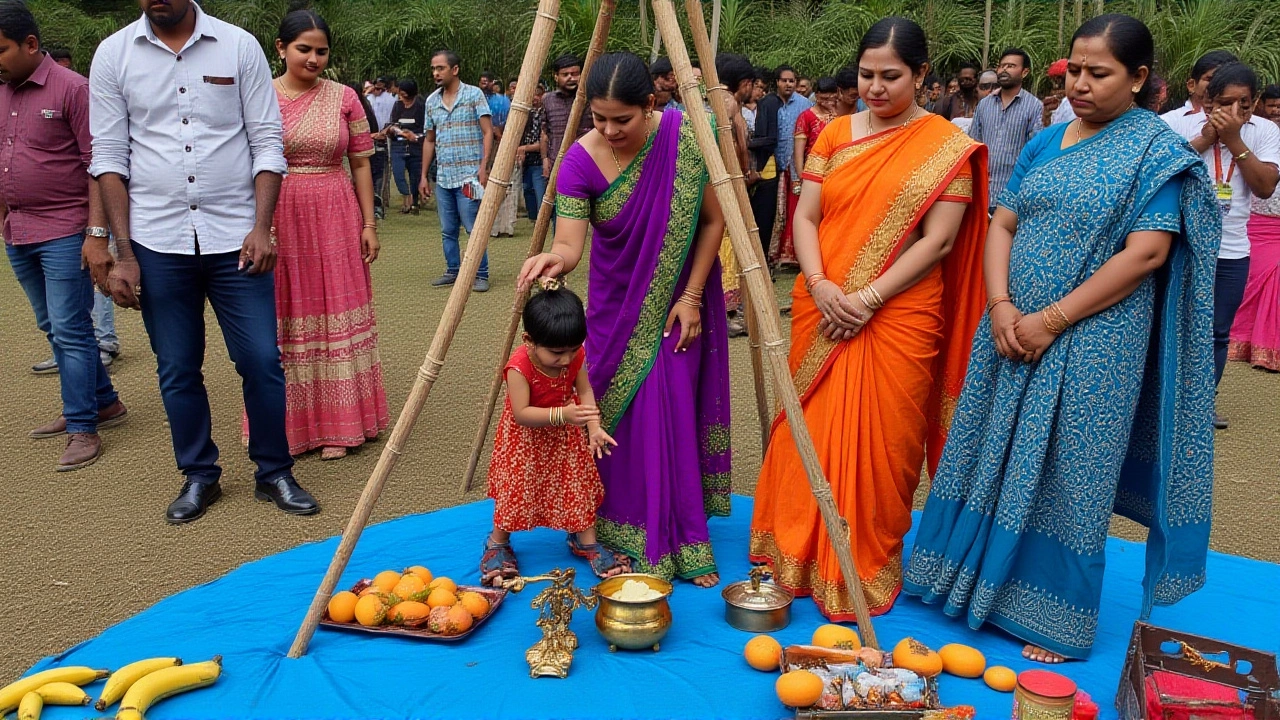A new direct rail link has emerged between northern and southern India, with the 04324 BE TBM SPECIAL train now operating daily from Bareilly Railway Station in Uttar Pradesh to Tambaram Railway Station in Tamil Nadu. Departing at 10:00 PM and arriving at 3:00 PM on the third day, the 1,715-kilometer journey spans 41 hours and connects 17 major stations across five states — a game-changer for families, migrant workers, and pilgrims who once faced multi-leg trips and overnight bus rides. The train’s launch, first reported by Amar Ujala on June 8, 2024, responds to years of demand from communities in western Uttar Pradesh seeking direct access to Chennai’s southern suburbs.
Why This Route Matters
Before this service, travelers from Bareilly had to change trains at least twice — often in Delhi or Bhopal — to reach Tamil Nadu. Now, they board once and ride straight through. The route cuts through the heart of India’s rail network: after leaving Bareilly, it passes through Kasganj, Mathura, Agra Cantt., Gwalior, Jhansi, Bhopal, Nagpur, and Vijayawada before reaching Chennai Egmore (officially Puratchi Thalaivar Dr. M.G. Ramachandran Central Railway Station) and finally Tambaram. That’s not just geography — it’s a lifeline.
For many, Tambaram isn’t just a stop — it’s a gateway. Located in the Chengalpattu district, it’s one of the busiest suburban hubs in the Chennai metropolitan area, with daily commuters from the city’s southern neighborhoods and workers from Tamil Nadu’s textile and IT corridors. The train’s timing — arriving midday on day three — means passengers can catch connecting buses or metro services without waiting overnight. That’s huge for families visiting temples in Tirupati or workers heading to factories near Sriperumbudur.
The Demand That Sparked the Service
According to the June 2024 Amar Ujala report (reference c-4-lko1018-416429-2024-06-08), the demand for direct connectivity had been building for over a decade. Bareilly’s population — over 1.2 million — includes thousands of seasonal laborers, students, and elderly pilgrims who regularly traveled to Tamil Nadu. Many relied on private buses that took 48+ hours and cost nearly as much as a flight. Others booked multiple train tickets, losing sleep in crowded waiting halls.
“We used to leave Bareilly on a Thursday, change in Bhopal on Friday, and reach Chennai on Sunday evening,” said Rajesh Kumar, a tailor who works in Chennai’s T. Nagar district. “Now? I leave Monday night, sleep through the journey, and walk into my shop Tuesday afternoon. It’s like someone finally listened.”
The Indian Railways didn’t announce this as a major policy shift. It rolled out quietly — likely as part of a pilot for under-served regional corridors. But the impact is anything but quiet. Goibibo’s booking platform shows near-full occupancy on the 04324 BE TBM SPECIAL, with over 90% of tickets sold in the first two weeks. That’s not just convenience — it’s economic mobility.
Who Benefits? And Who’s Left Behind?
The beneficiaries are clear: migrant workers, students from Uttar Pradesh studying in Chennai’s medical colleges, and families traveling for weddings or religious festivals like the annual Kumbh Mela in Kanchipuram. But the route also exposes gaps. The train doesn’t stop at smaller towns like Etawah or Nandyal — places where people still need to travel hours to reach Bareilly or Vijayawada. And while the fare is competitive — roughly ₹1,200 in unreserved, ₹3,500 in AC 3-tier — it’s still out of reach for daily wage earners.
“This train is a step forward,” said Dr. Anjali Mehta, a transport economist at the Indian Institute of Public Administration. “But we need more than one special train. We need a permanent, scheduled service — with better amenities, reserved seats for women and elderly, and feeder buses from district towns. Otherwise, it’s a luxury for the few.”

What Comes Next?
Railway officials have not confirmed whether this will become a permanent fixture, but the data speaks loudly. The train ran 12 times in its first month — and each time, it was full. If ridership holds above 85%, it’s likely to be upgraded to a regular weekly service by March 2026. Rumors suggest a similar route may be planned from Moradabad to Coimbatore, and from Lucknow to Madurai.
For now, passengers are making the most of it. Ticket booking through Goibibo and IRCTC is seamless — but only if you plan ahead. Seats vanish within 72 hours of release. And while the train offers basic catering, many travelers bring their own food. “It’s not five-star,” said Priya Singh, a college student returning from her internship in Chennai. “But it’s mine. And it gets me home.”
Background: The North-South Divide in Indian Railways
India’s rail network was built in the 19th century with colonial priorities — connecting ports to resource zones, not people to people. The north-south axis, especially between the Gangetic plains and the Deccan, remained fragmented. Even today, fewer than 12 direct trains link Uttar Pradesh to Tamil Nadu. Most routes require a detour through Delhi or Hyderabad.
The 04324 BE TBM SPECIAL is part of a quiet revolution: regional connectivity driven by demand, not top-down planning. Similar services have emerged in recent years — like the Dibrugarh–Kanyakumari Vivek Express, or the Patna–Mysuru train. But this one? It’s personal. It connects a small city in Uttar Pradesh to the suburbs of a megacity in the south — not through bureaucracy, but through necessity.
Frequently Asked Questions
How often does the 04324 BE TBM SPECIAL run?
The train operates daily, departing Bareilly Railway Station at 10:00 PM and arriving at Tambaram Railway Station at 3:00 PM on the third day. Booking platforms like IRCTC and Goibibo confirm daily service as of late 2025, with no scheduled breaks. Passengers are advised to check for holiday adjustments during Diwali or Pongal, when demand spikes.
What’s the total distance and journey time?
The train covers exactly 1,715 kilometers across 17 stations, taking 41 hours from departure to arrival. That’s roughly 4 hours faster than the average multi-leg journey via Delhi or Bhopal. The route follows the Grand Trunk and Howrah-Chennai main lines, passing through major junctions like Jhansi, Nagpur, and Vijayawada without requiring transfers.
Can I book tickets online, and how popular is the service?
Yes, tickets are available on IRCTC and third-party platforms like Goibibo, with ‘Book Now’ options active since late 2024. Demand has been exceptionally high — nearly 90% occupancy in the first month. AC 3-tier tickets sell out fastest, often within 72 hours of release. Unreserved tickets are available at stations but are not recommended for long journeys.
Why is Tambaram the final stop instead of Chennai Egmore?
Tambaram is one of Chennai’s most critical suburban terminals, handling over 200,000 daily commuters. While Chennai Egmore (officially Puratchi Thalaivar Dr. M.G. Ramachandran Central Railway Station) serves long-distance trains, Tambaram is better connected to southern suburbs, IT parks, and bus routes. Ending here reduces congestion and gives passengers direct access to key destinations without crossing the city.
Is this train likely to become permanent?
With consistent ridership above 85% and no operational issues reported, Indian Railways is evaluating a permanent upgrade to a weekly scheduled service by March 2026. A formal announcement is expected after the Q1 2026 passenger survey. If approved, it could be renumbered and integrated into the national timetable — making it the first direct daily link between Bareilly and Tamil Nadu.
What are the major stops along the route?
The train stops at 17 stations: Bareilly (BE), Kasganj (KSJ), Hathras Road (HTJ), Mathura (MTJ), Agra Cantt. (AGC), Gwalior (GWL), Virangana Lakshmibai Jhansi Junction (VGLJ), Bina Junction (BINA), Bhopal (BPL), Itarsi Junction (ET), Nagpur Junction (NGP), Warangal Junction (WL), Vijayawada Junction (BZA), Nellore (NLR), Gudur Junction (GDR), Chennai Egmore (MS), and Tambaram (TBM). These are all major junctions, ensuring access to regional hubs across five states.
